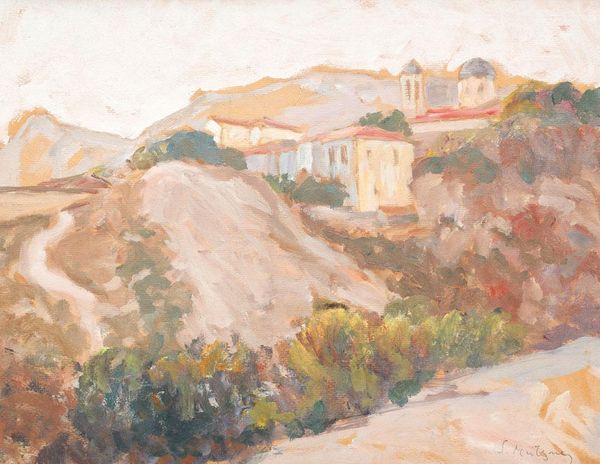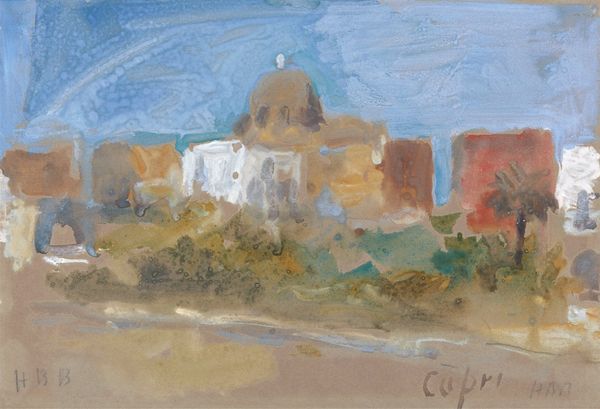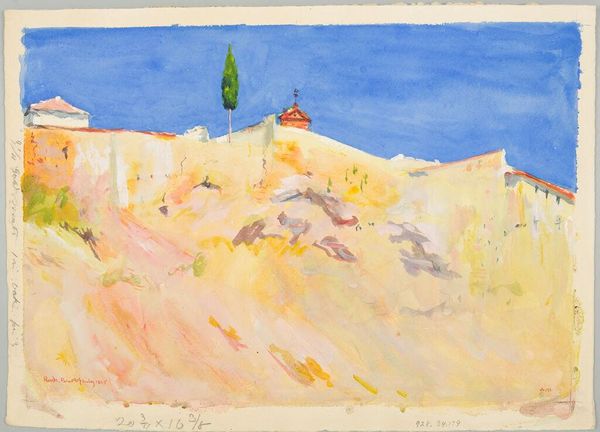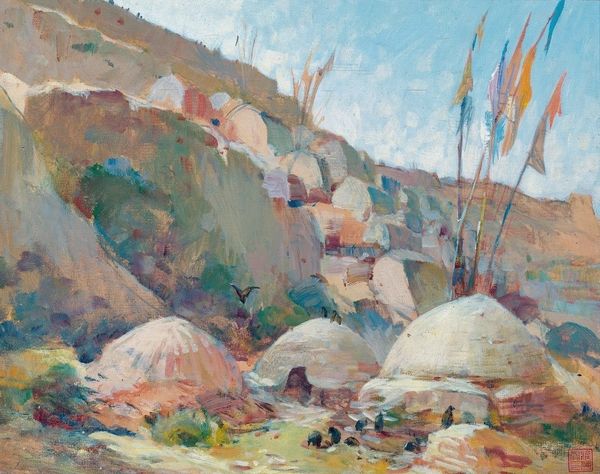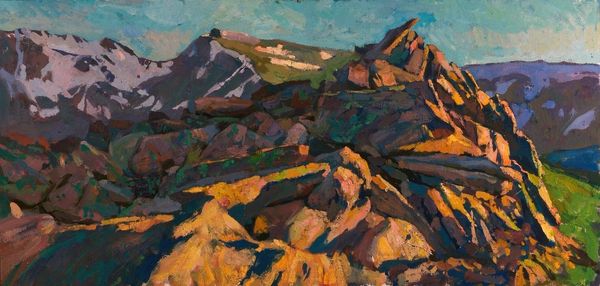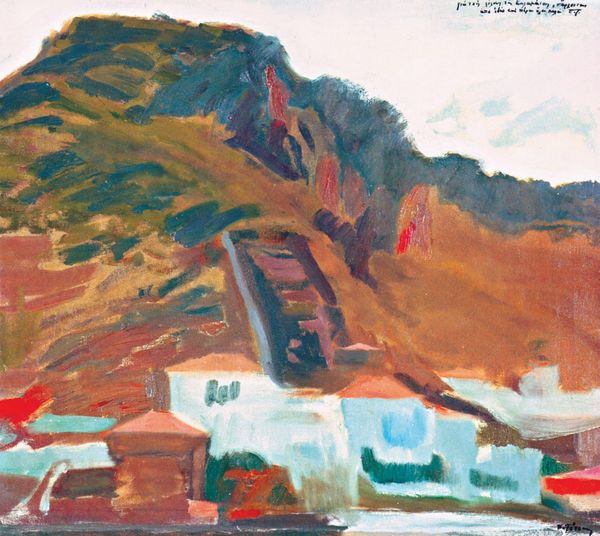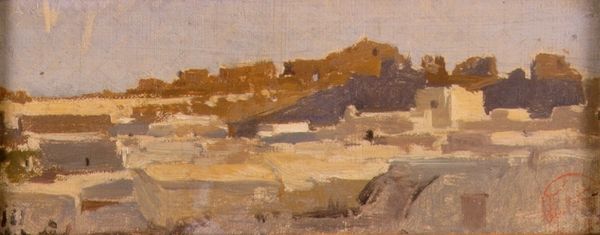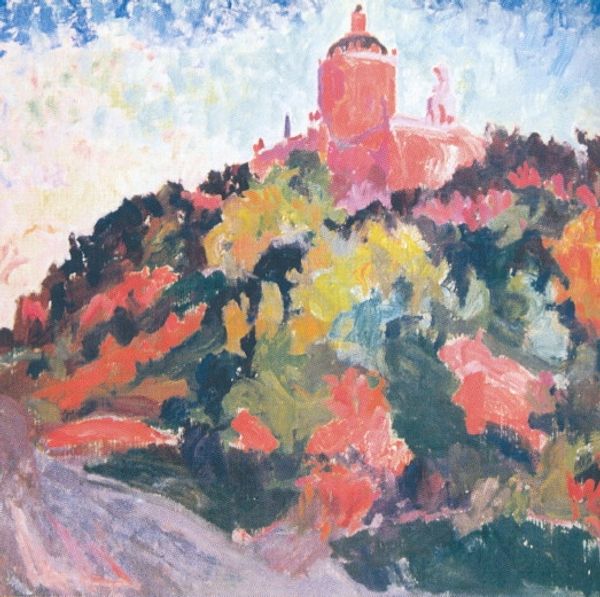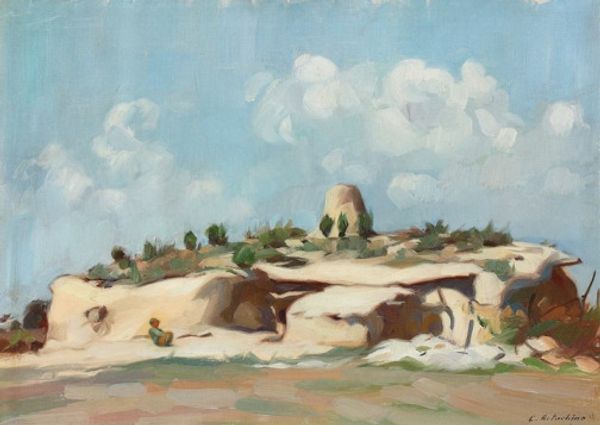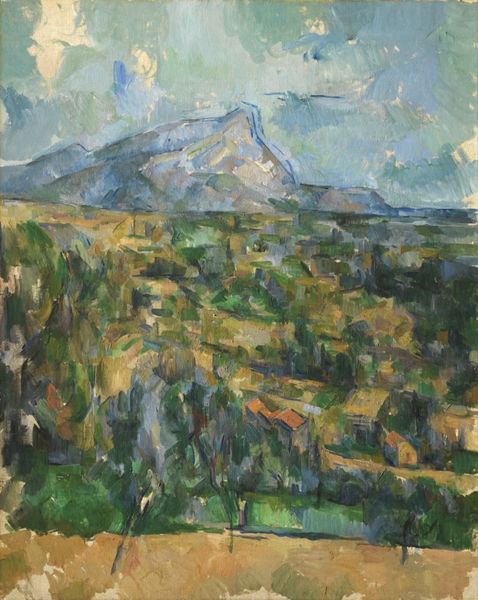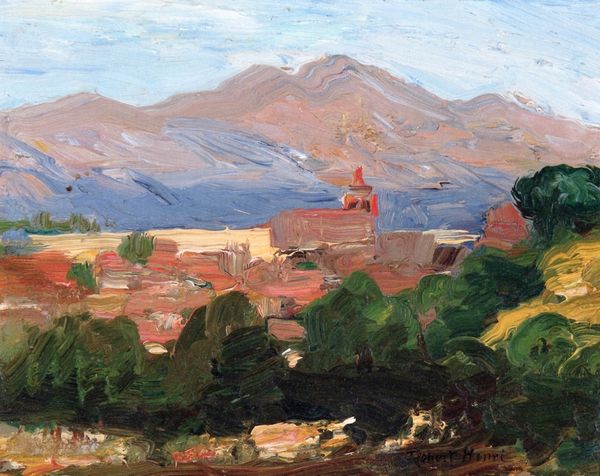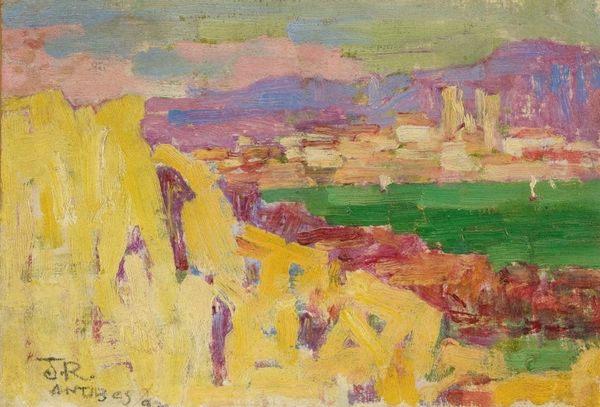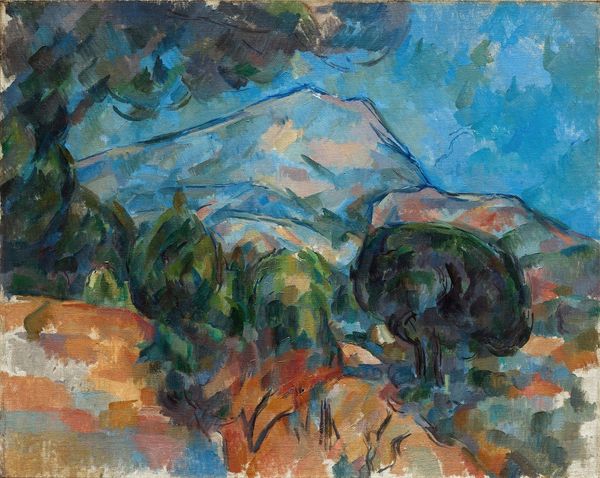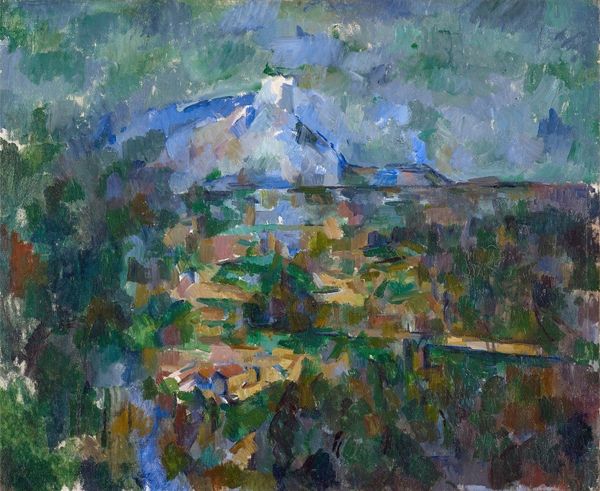
plein-air, oil-paint
#
impressionism
#
plein-air
#
oil-paint
#
landscape
#
oil painting
#
romanticism
#
cityscape
Copyright: Modern Artists: Artvee
Curator: This painting, entitled "The Golden Age," appears to be an oil-on-canvas work. Editor: It feels like a postcard from another time, but there is a strong impressionistic leaning, I wonder about that high key and use of glazing. Curator: Given its landscape and cityscape features combined with romanticism, it presents the idea of landscape and cityscape coming together to present us a perspective that has shifted throughout modernity as cities became less dense and nature had to be sought in new ways. This is also perhaps a "plein-air" painting done on location, which reflects a modern artistic method that developed around the same time as this cultural shift. What can we infer about the structures depicted within this composition? Editor: The brushwork is fairly loose. Look at how light defines form, almost dissolving the architecture into atmospheric color. See how those dome structures on top of the hillside pull your eye upward towards a point in the background, I almost wish there was more impasto to give dimension. How might we think about these choices of tone and brushwork to suggest themes like romanticism? Curator: Yes, considering what we can glean from this method is something worth noting as the location of that hillside feels similar to a few that sit in proximity to modern areas. Given the work is from the twenty-first century, is there something to be read in these intentional connections or overlaps of time, medium, theme, and process? Editor: I see the way the light is depicted, that sense of fleeting time captured, evokes something of the sublime in nature that those earlier Romantics so pursued. Graziano manages to distill that historical connection. So yes, a romanticized and perhaps timeless sensibility pervades. Curator: Interesting to interpret the golden tones within this art in the context of historical artistic tradition and broader understanding. The cultural nuances embedded in a work such as this highlight ways identity and tradition intermingle with how our present understanding is shaped. Editor: Looking closer, I begin to feel how the visible brushstrokes do more than render light; they reveal the hand, the artist’s presence. Curator: True, they provide access to this narrative of the modern. Thank you for discussing, that provided greater insights. Editor: Indeed. I also greatly enjoyed seeing all its forms start coming together.
Comments
No comments
Be the first to comment and join the conversation on the ultimate creative platform.
